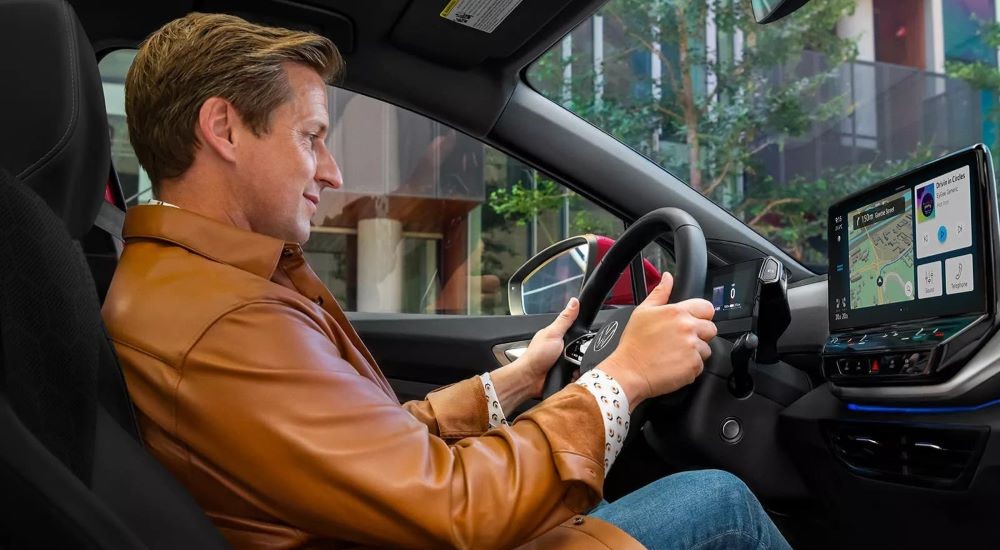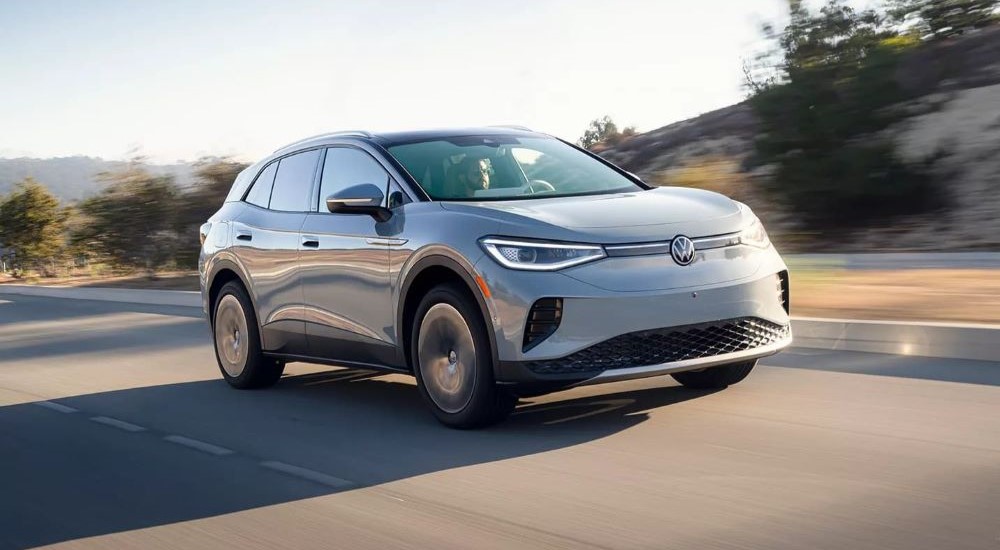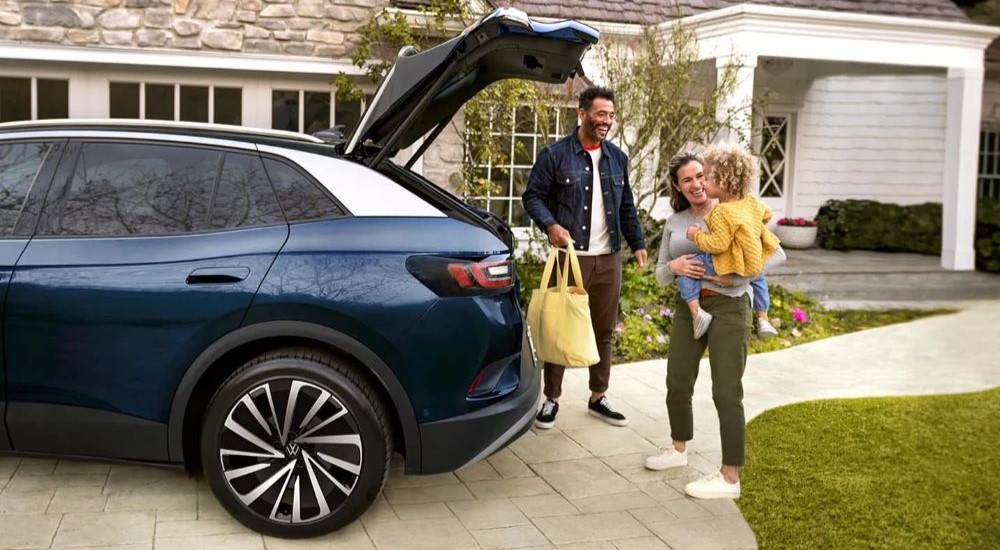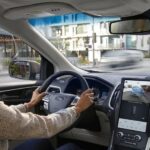Before heading to your local Volkswagen dealer, you might want to learn everything you can about the specific model of Volkswagen that’s caught your eye. What trims are there? What features does each have? And—perhaps most importantly—what about safety?
According to Volkswagen, “IQ.DRIVE is safety-enhancing intelligence that is convenient and can help improve your everyday driving experience.” That sounds fantastic to those of us who are eager to improve our everyday driving experience (and honestly, who isn’t?) But what do these words actually mean, and what does IQ.DRIVE really do to deliver on this promise? Take a look at the different types of driver assistance technology that make up the IQ.DRIVE suite of safety features to see how Volkswagen has used familiar features to create peace of mind for its drivers.
What Is IQ.DRIVE?
We all have complicated feelings about our fellow drivers. There is a lot to be grateful for in the greater King County area, including our access to literally anywhere. Thanks to our proximity to the coast, Seattle, Tacoma, and a fantastic international airport, SeaTac drivers know a thing or two about getting around. Unfortunately, it seems like not all of the drivers on the Pacific Highway read the same Drivers Ed manual, which makes safety a concern for everyone.
Safety and driver assistance technology can save lives no matter where you’re driving. Volkswagen’s IQ.DRIVE technology combines cameras, radar, and sensors throughout and around the outside of the vehicle to provide drivers with extra support as they navigate highways in the rain, driveways in the snow, or the regular stop-and-go traffic that makes up most of our hours behind the wheel. While we unfortunately have not yet created automotive technology that can eliminate driver error completely, Volkswagen’s IQ.DRIVE provides 360-degree driver support.
Beginning with the 2024 model year, all Volkswagen vehicles equipped with an automatic transmission include IQ.DRIVE as standard equipment. This includes most of the lineup, though manual transmission purists will be happy to know that Volkswagen continues to offer the GTI, Golf R, and Jetta as stick-shifts—for another year, anyway. Drivers interested in these vehicles may want to closely review the safety specs to determine which features are standard or optional.
Everything That Travel Assist Can Do
The primary technology within IQ.DRIVE is called Travel Assist and, combined with a few other technologies, the full IQ.DRIVE package has the potential to avoid, mitigate, or reduce the severity of potential collisions and driving accidents.
Travel Assist essentially combines the functions of traditional Adaptive Cruise Control and Lane Keep Assist technologies. In practice, Travel Assist works to keep your Volkswagen neatly centered in your lane as the road ahead curves, while maintaining a safe following distance from the vehicle in front of you with driver-preset follow distance and speed settings.
Consider the stress and frustration of stop-and-go rush hour traffic. Travel Assist can ensure that you maintain a safe distance from the vehicle in front of you even as a small part of your brain continues to unwind from the day you’ve just had. While you’ll still need to pay attention to the road and keep your hands on the wheel, your Volkswagen will take a lot of the guesswork and human error components out of braking and slowing.
It is not a perfectly autonomous system, of course, and it’s essential to pay full attention to the road. If road conditions prevent the sensors from locating lane markers, for example, Travel Assist will not be able to keep your vehicle centered in your lane. Additionally, Travel Assist only detects vehicles that are traveling in the same direction as you are, which means you’ll need to keep your eye out for oncoming and intersecting traffic. Volkswagen also acknowledges that this type of technology isn’t always helpful. For example, you probably don’t need to set a follow distance and maximum speed to make a quick run to the mini-mart. Therefore, Travel Assist can be activated and deactivated as necessary to help drivers make the best decisions they can while on the road.
The Many Components of IQ.DRIVE
IQ.DRIVE is much more than Travel Assist, however. While Volkswagen’s adaptive cruise control and lane-centering technology are at the helm of the IQ.DRIVE system: there are quite a few innovative features at work to keep drivers and passengers safe while traveling.
The lane-centering technology included in IQ.DRIVE is actually achieved through a combination of systems. Lane marker identification senses different types of lane markings on both sides of the vehicle. This allows lane assist technology to use these sensors to ensure the body of the car is centered between markers. When the system senses that the vehicle has crossed over a lane marker without using the blinker, it will provide alerts and counter-steering measures to avoid a potential accident. Additionally, this technology can be used independently of Travel Assist in many models, providing drivers with extra confidence in their steering.
Front assist technology uses radar sensors and cameras to recognize and react to potential obstacles or hazards in front of the car while moving forward. Not only is this technology helpful when used in conjunction with adaptive cruise control, but it can also be handy when navigating crowded parking lots or while parallel parking.
Rear Traffic Alert has a similar function when traveling in reverse. This system detects obstacles and cross traffic behind your Volkswagen and provides audio and visual warnings to alert you to potential danger. This system can also provide emergency auto-braking to avoid a rear-traveling collision.
Another part of the IQ.DRIVE suite of technology is an Active Blind Spot Monitor. This monitor continuously scans both behind and along both sides of your Volkswagen. A visual notification then alerts drivers when a vehicle is detected in this space. As a result, drivers have greater awareness of their surroundings, which means they can change lanes and merge into rapidly moving traffic with more confidence.
The VW Emergency Assist system is designed to ensure the driver is awake, attentive, and driving carefully. In an era in which distracted and drowsy driving are huge concerns for all motorists, Emergency Assist ensures that everyone who shares the road remains safe and alert. This system monitors the movement and activity of the steering wheel to ensure the driver is truly operating the vehicle. If the system feels you’ve left your hands off the wheel for too long, it will send an alert to ensure you are actively operating the vehicle.
Should you not respond to the early alert, Emergency Assist will then ensure the vehicle stays in its current lane while bringing it to a quick but controlled stop. In the event a driver remains unresponsive after the vehicle is entirely stopped, the system can connect with the Volkswagen Response Center for emergency services to locate and check on the vehicle and its occupants.
An IQ Boost for All Situations
Volkswagen is quick to note that these features can be deactivated and activated as necessary. After all, lane-centering technology is not terribly helpful to those who drive on trails or dirt roads. Furthermore, trailering and towing can impact the effectiveness of some of these technologies.
Granted, there are far worse places to drive than the SeaTac area, but the truth is that accidents can happen anywhere at any time—technology like Volkswagen’s IQ.DRIVE system can help reduce driver error, but it’s important to always keep your eyes on the road and your attention on the road in front of you. At least until we get fully autonomous cars.






